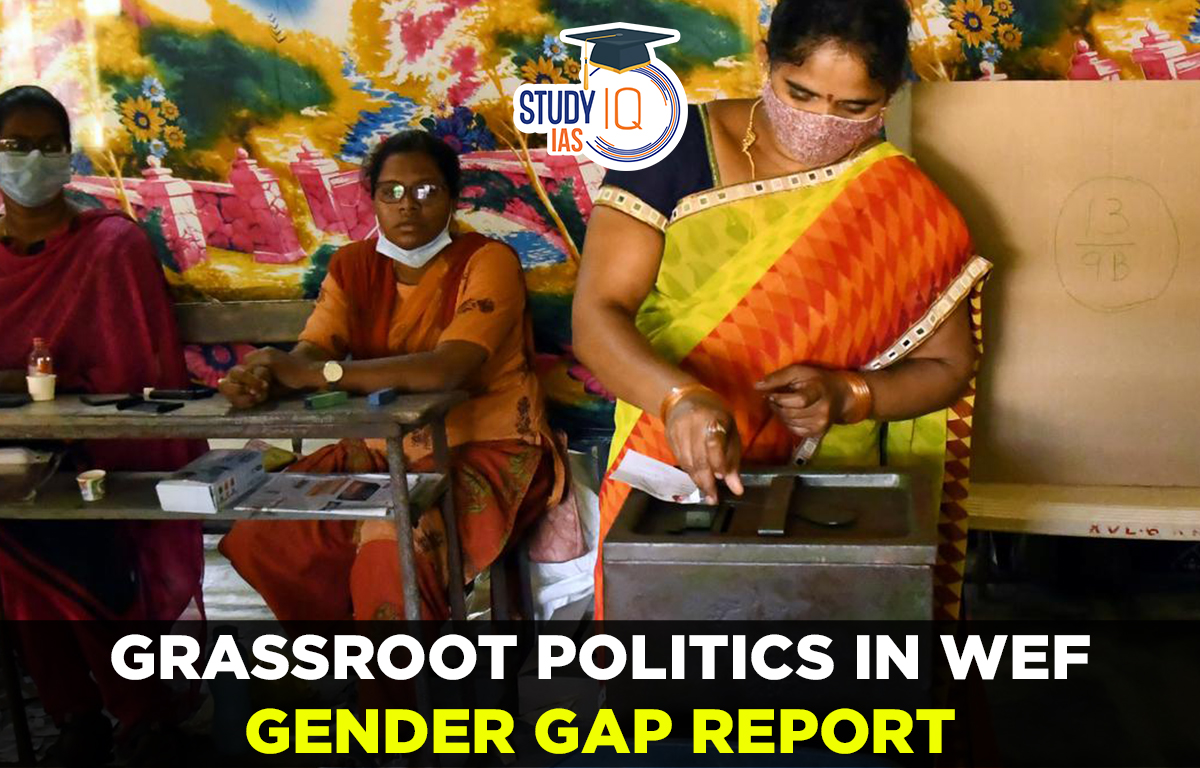Table of Contents
Context: After India’s Insistence, World Economic Forum (WEF) has decided to count women’s participation in local bodies in its gender gap report.
Current Status
- WEF’s Gender Gap Report is based on four parameters:
- economic participation and opportunity,
- educational attainment.
- health and survival.
- Political empowerment: WEF considers only Union ministers and not even ministers of states and MLAs.
- WEF in its Global Gender Gap (GGG) Index for 2022 ranked India at 135 out of 146 countries.
- However, the Indian government has time and again rejected the index, saying that the index does not give a complete picture as it does not take into account the ministers of state, an elected representatives in state assemblies and local government bodies.
- Participation of women in panchayats accounts for a significantly large number of grassroots women locally elected at the panchayat level and at local bodies.
- Changes Sought: WEF will work with India to strengthen collaboration around the agenda of women and work together on improving global data collection and cross-country benchmarking efforts to assess in a globally comparable way participation of women in local political decision-making.

Other WEF and India Collaboration
- Establishing skills and gender parity accelerator in India: To identify and scale up targeted public-private initiatives that will prepare the Indian workforce for the future of work, support the development of the Indian digital, care and green economy, and expand the skills of women for the new economy.
- About Gender Parity Accelerators: They are national public-private collaboration platforms that seek to close gender gaps in labour force participation, wages, and leadership; and hardwire gender parity in the future of work.
- Objective of Gender Parity Accelerators
- Enabling women’s participation in the labour force
- Closing the gender wage gap
- Advancing women into leadership and management roles
- Hardwiring gender parity in the future of work

- WEF on Gender Budgeting: WEF assured that the positive outcomes of India’s gender budgeting process will be projected on the WEF digital platform.
Gender-Responsive Budgeting (GRB) Or Gender Budgeting
- Gender budgeting’ refers to mainstreaming gender in the design, implementation and evaluation of financial allocations, across all government expenditures.
- GRB is critical for eliminating gender inequalities with significant improvements in social, educational, health and economic indicators of a country.
- It refers to a systematic gender-differentiated impact of fiscal provisions, programmes and policies.
India and Gender Budgeting
- India adopted gender budgeting in 2004-05 based on the recommendations of an expert group committee constituted by the Ministry of Finance
- As defined by the Government of India (2007), a gender-responsive budget acknowledges the gender patterns in society and allocates money to make policies and programmes gender-equitable.
- As a fiscal innovation, gender budgeting has undergone four phases in India:
- Knowledge networking and model building;
- Institutional mechanisms;
- Capacity building.
- Accounting mechanisms
- Gender budgeting can be integrated into every programme and scheme of the Government of India, departments of the Union, State and PRI Budgets.
- Ministry of Women and Child Development (MWCD) is the nodal agency for the coordination of Gender Budgeting activities including the preparation of a strategic framework of activities that are then disseminated across various ministries and departments.
- First of its Kind Initiative: India has made history as the first country ever to integrate gender in the intergovernmental fiscal transfers (IGFT) formula.
- 15th Finance Commission has decided to give 12.5 per cent weightage to “demographic performance” is laudable.
- Commission will use total fertility rate (TFR)— instead of other plausible indicators like the female population of the states or the sex ratio of 0-6 age group — as an indicator of “demographic performance”.


 Daily Quiz 05 July 2025
Daily Quiz 05 July 2025
 SSC MTS Apply Online for 1075 Posts – ...
SSC MTS Apply Online for 1075 Posts – ...
 Dynamic Pricing: What It Is and Why It's...
Dynamic Pricing: What It Is and Why It's...





















